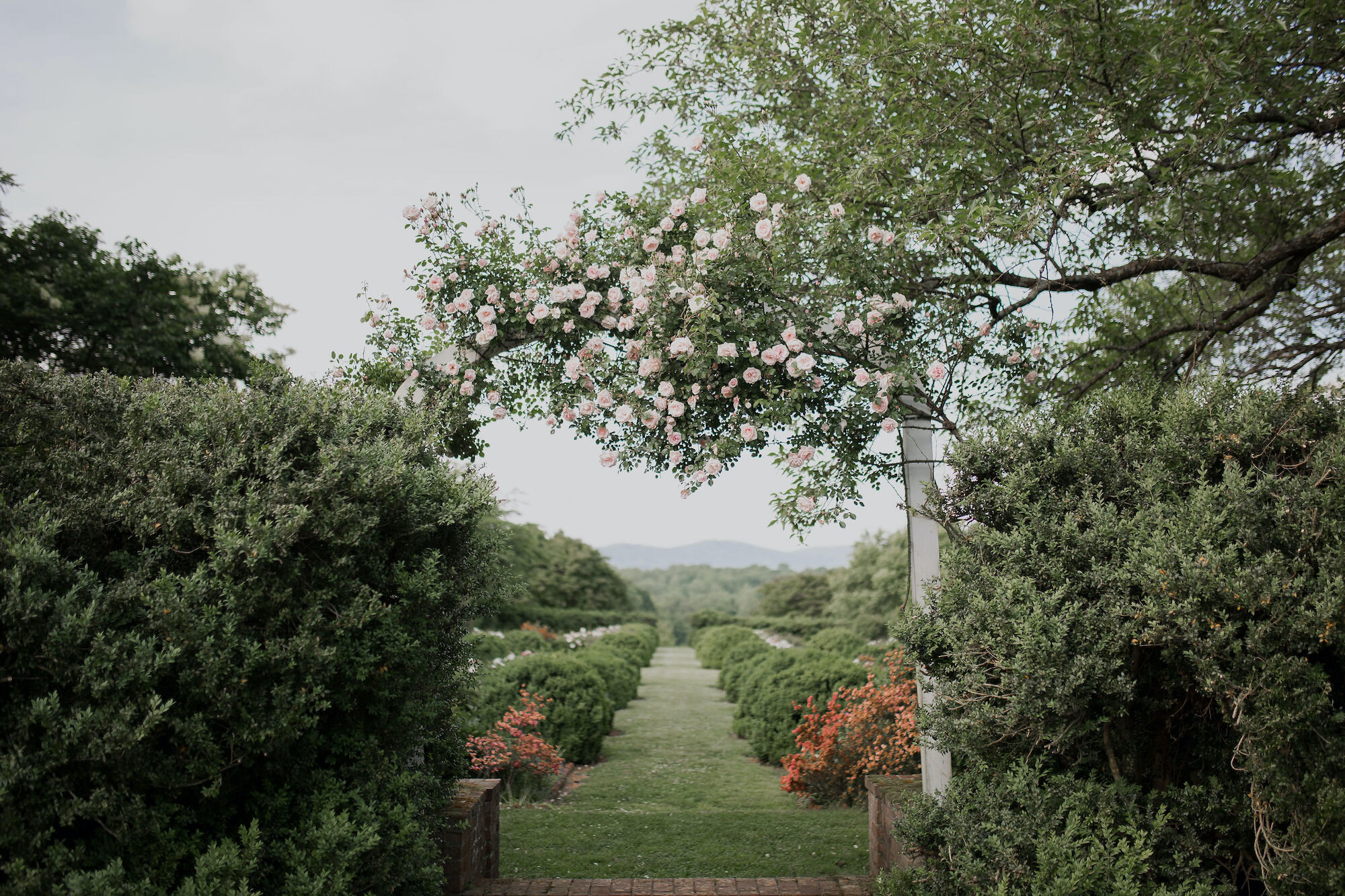
The Formal Gardens
Morven and its setting are considered an epitome of a Piedmont Virginia estate. Within the bounds of farm, fields, and the forested slope of Carter’s Mountain, the focal point of the estate is the Main House and its gardens.
In the formal garden, entry gates, and other prominent features, Morven’s landscape is significant for the integrity of its 1930s design by prominent landscape architect Annette Hoyt Flanders. Research projects are exploring the influence of earlier designers and owners as well, as the property transitioned from plantation agriculture dependent on enslaved workers into a country estate by the end of the 19th century.
Morven has been featured every year since the beginning of the Garden Week tours in 1929, and is proud to continue this tradition of celebrating Virginia’s finest homes and gardens. And Morven’s outstanding botanical collection provides an exceptional resource for the Horticulture program at Piedmont Virginia Community College.
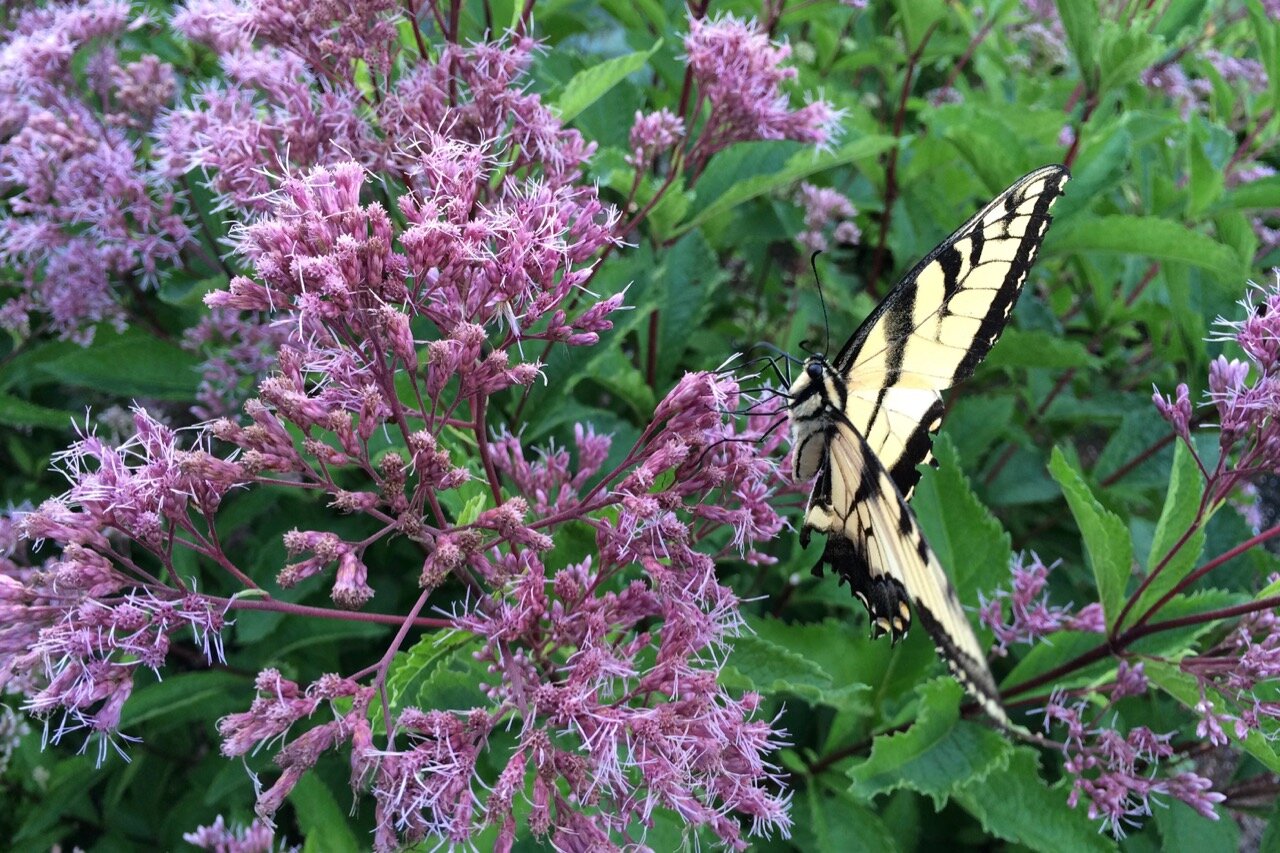
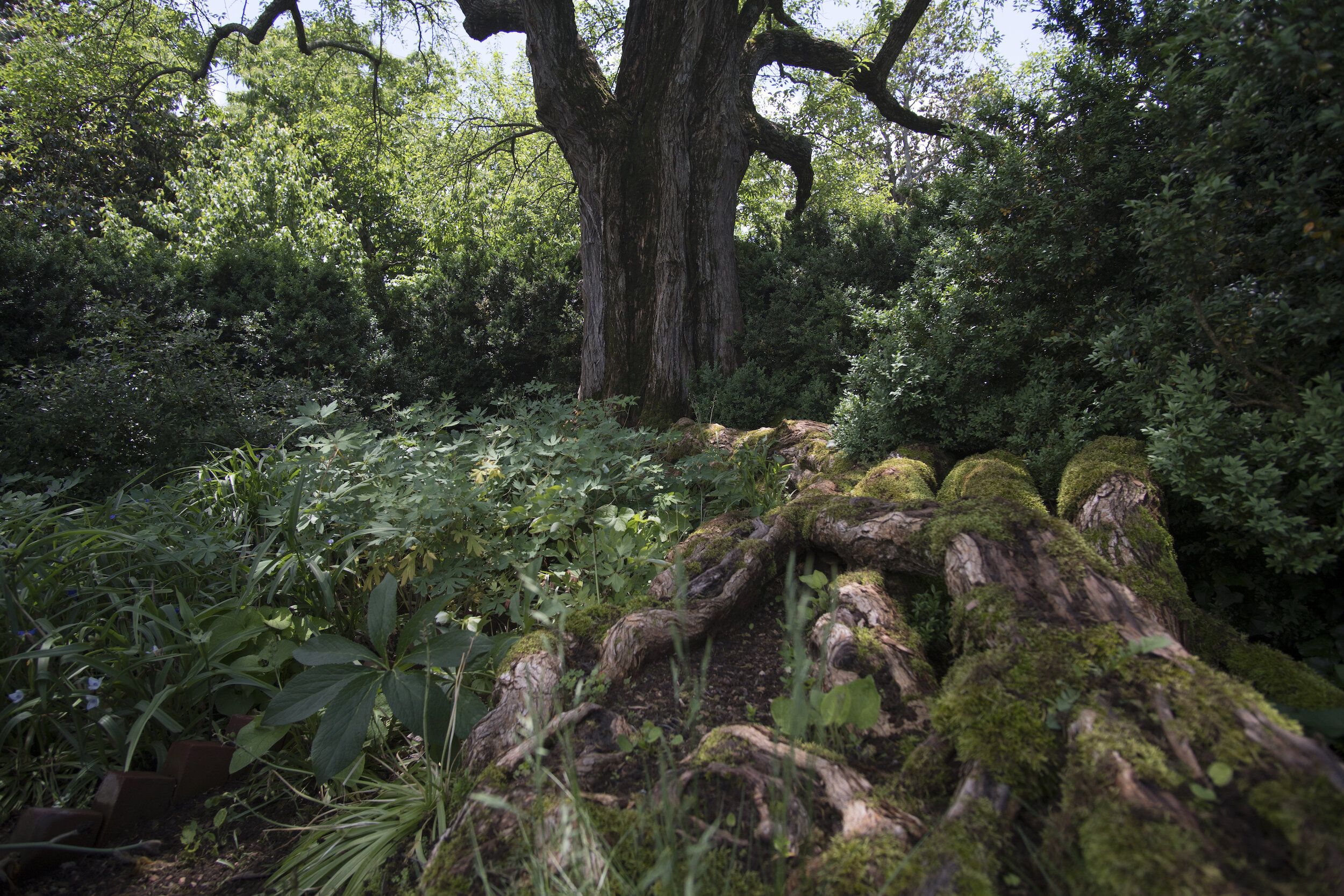
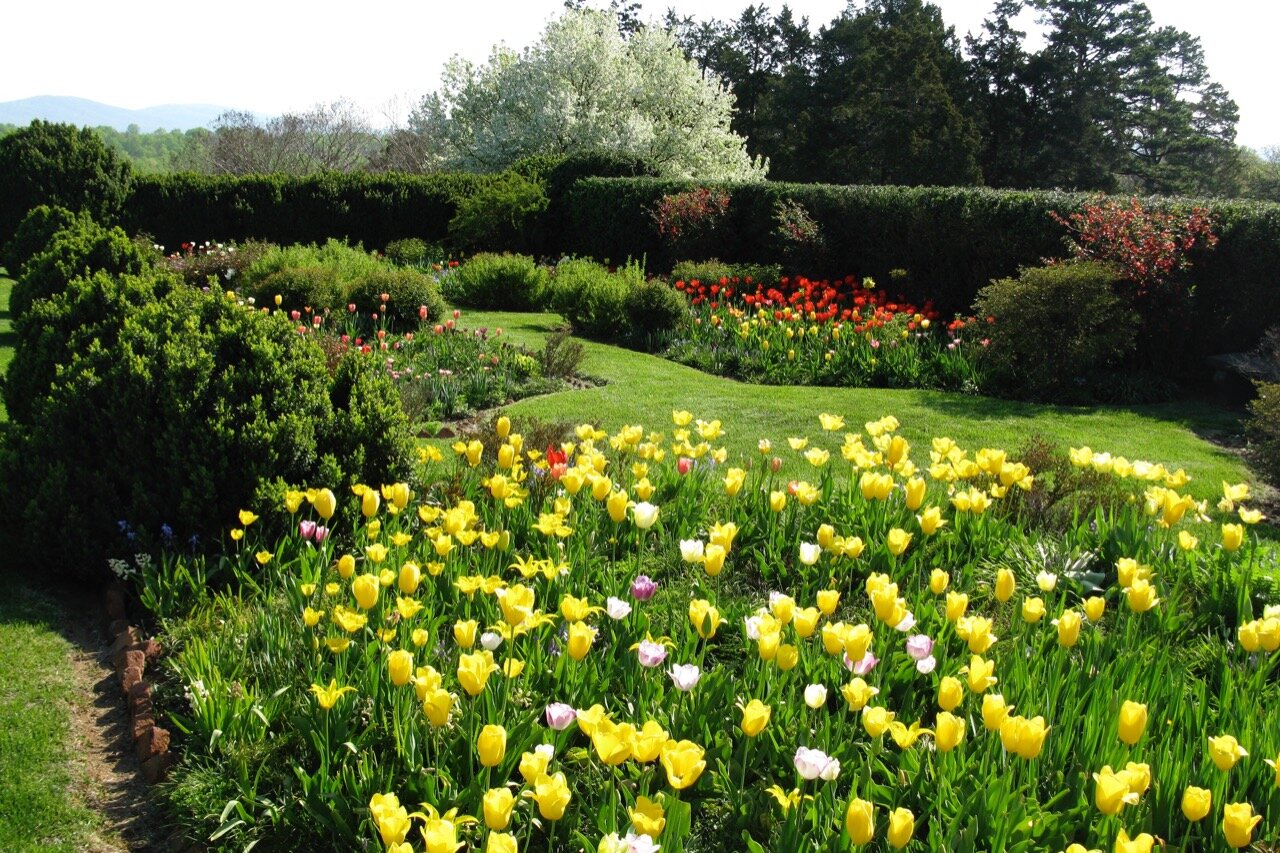
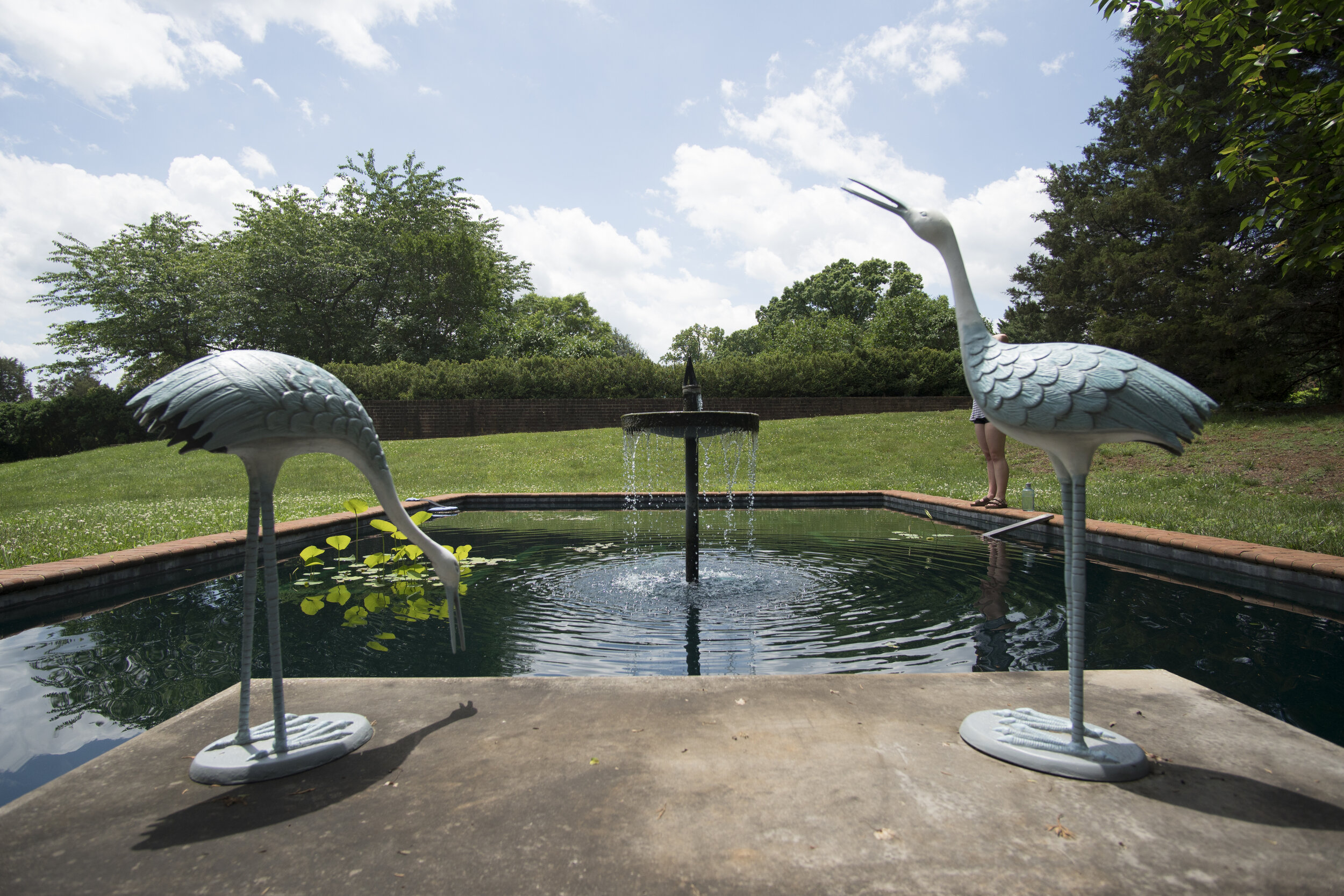
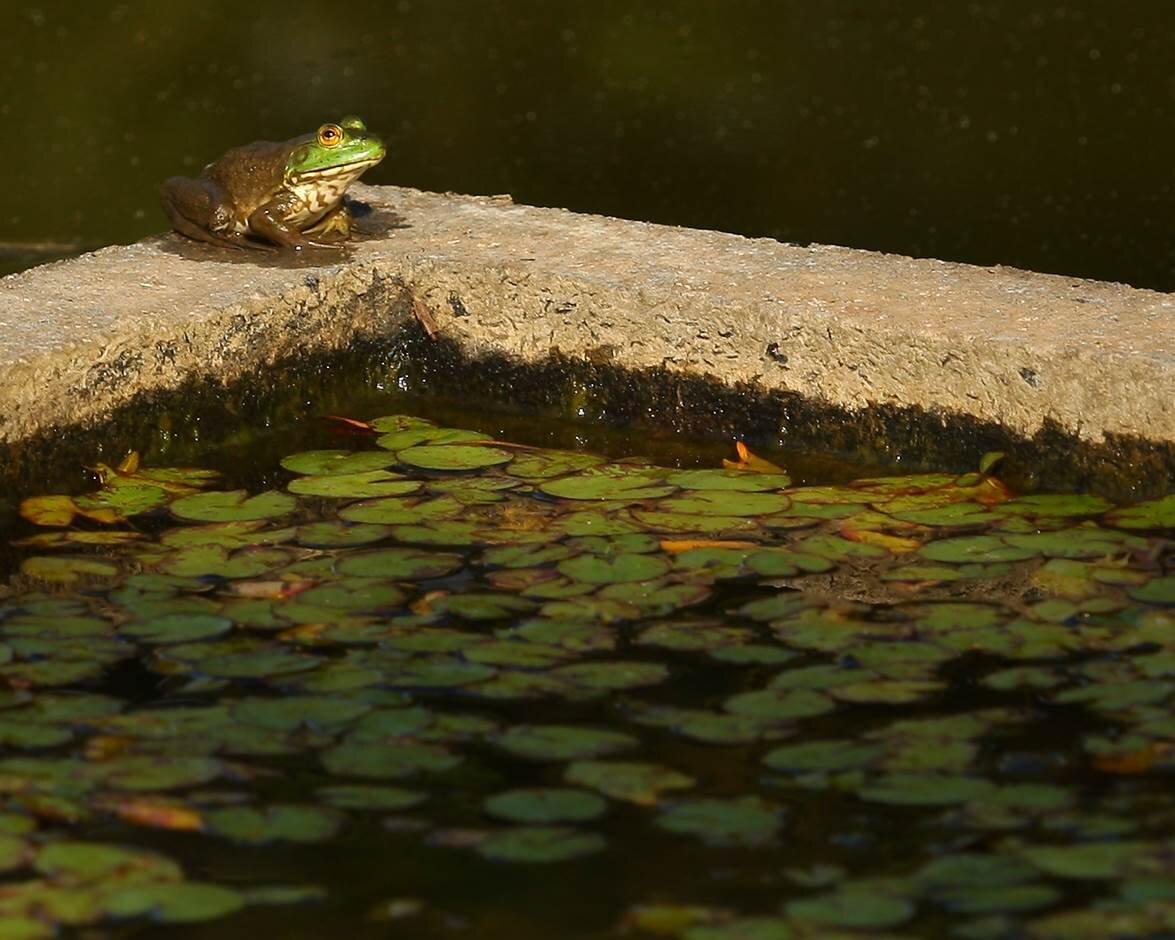
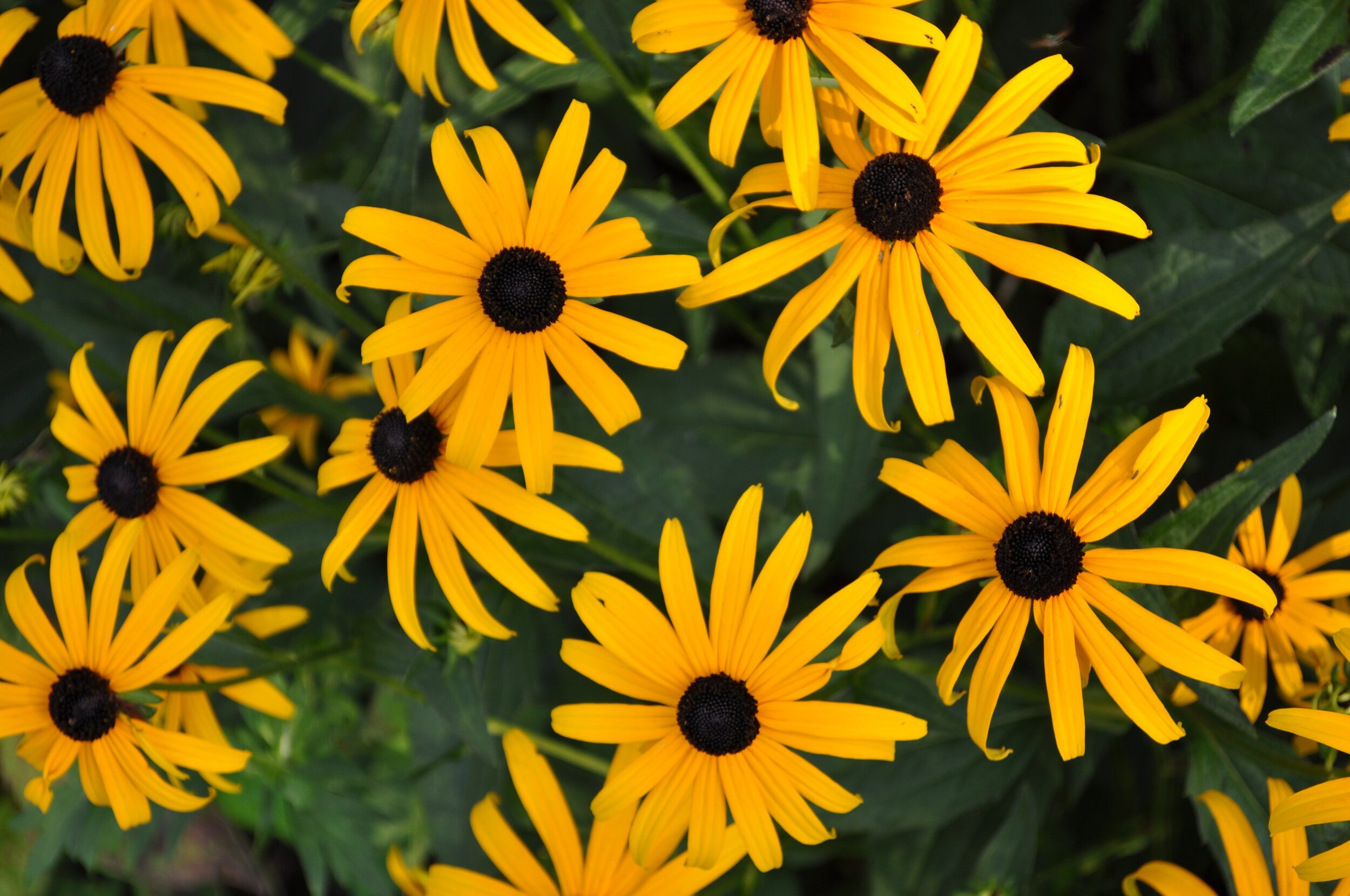
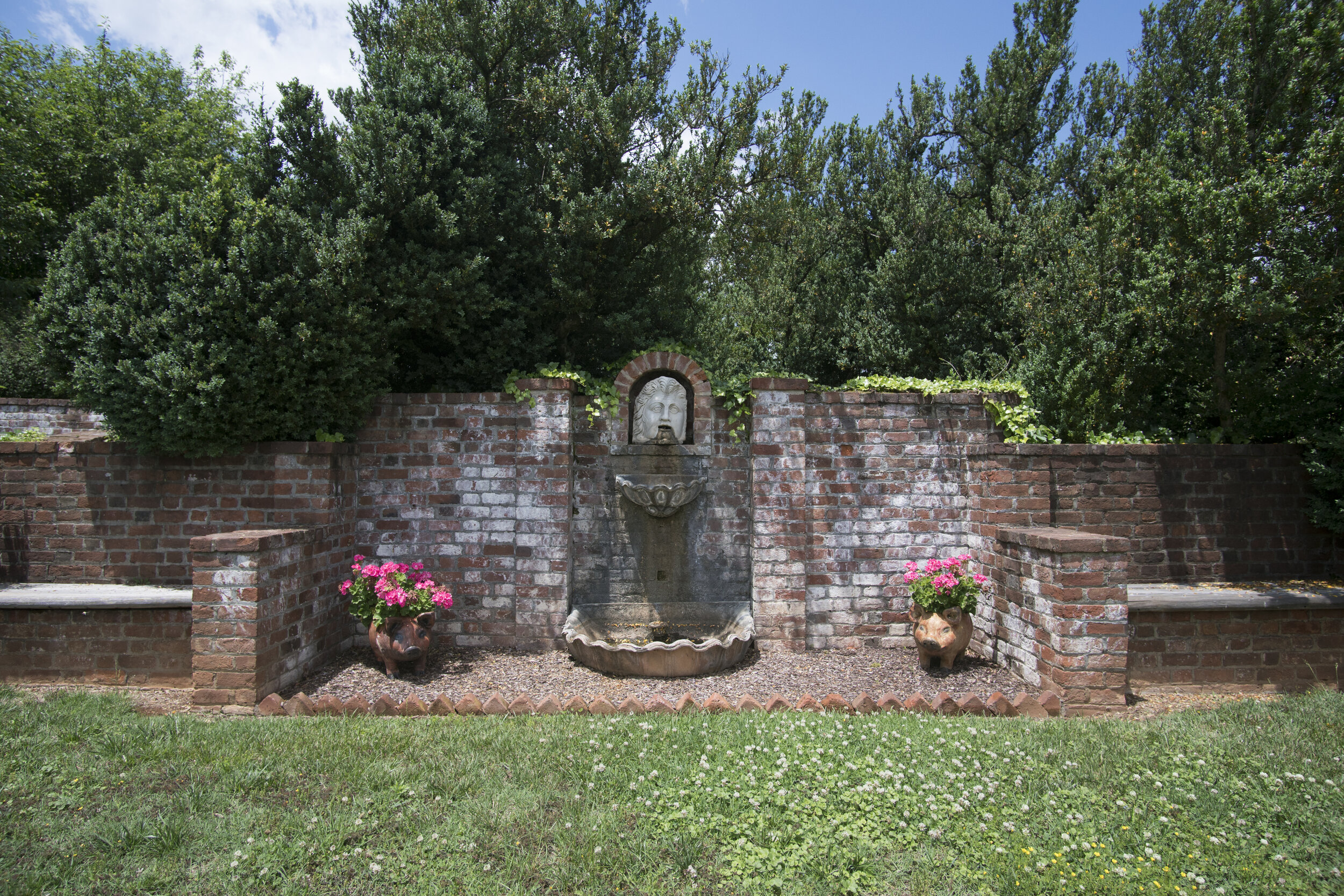

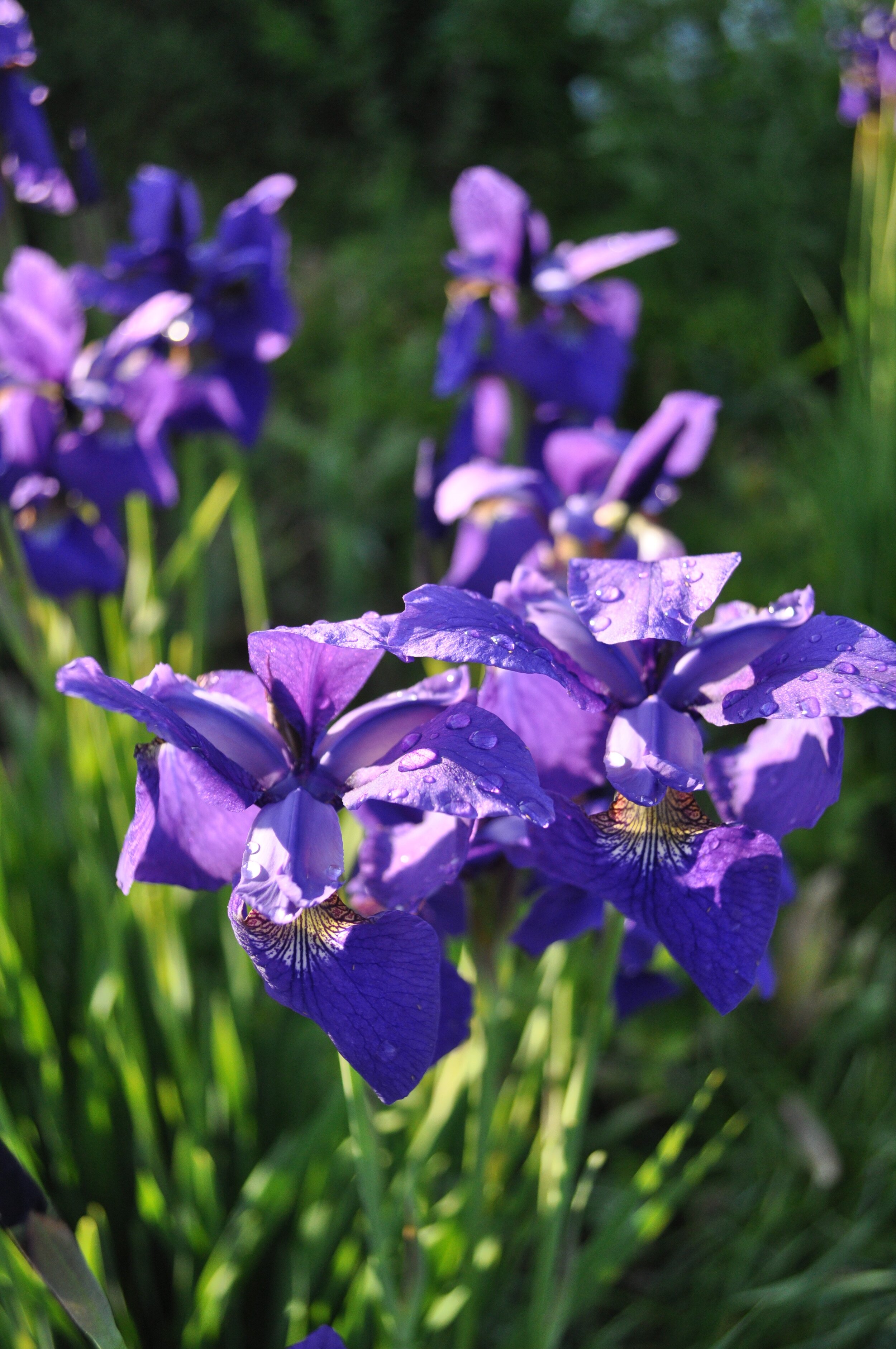
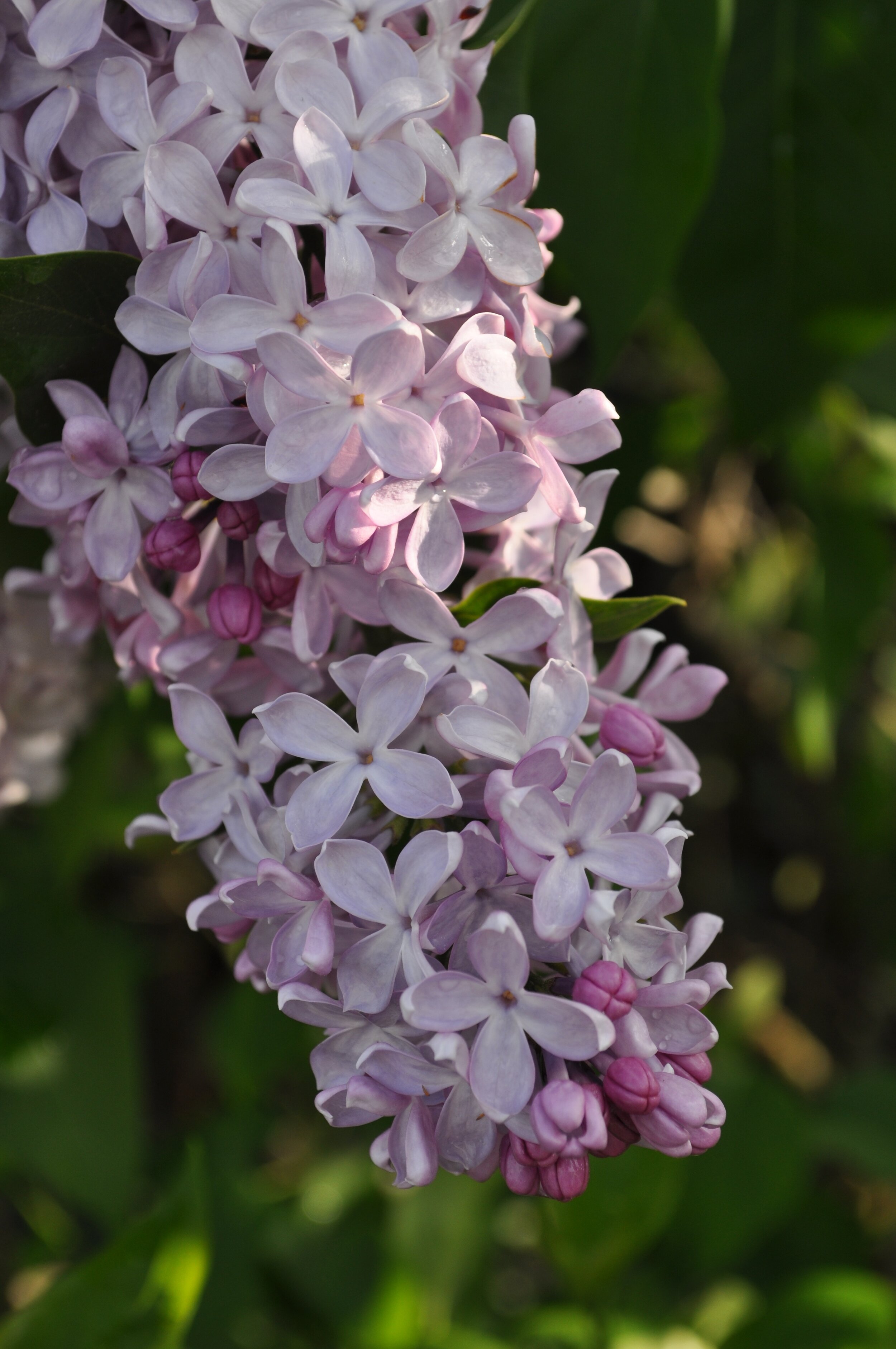
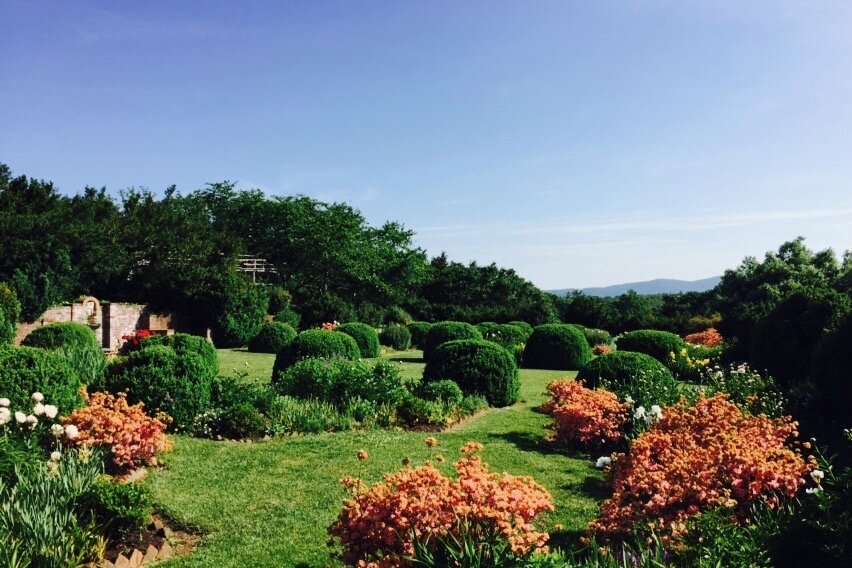
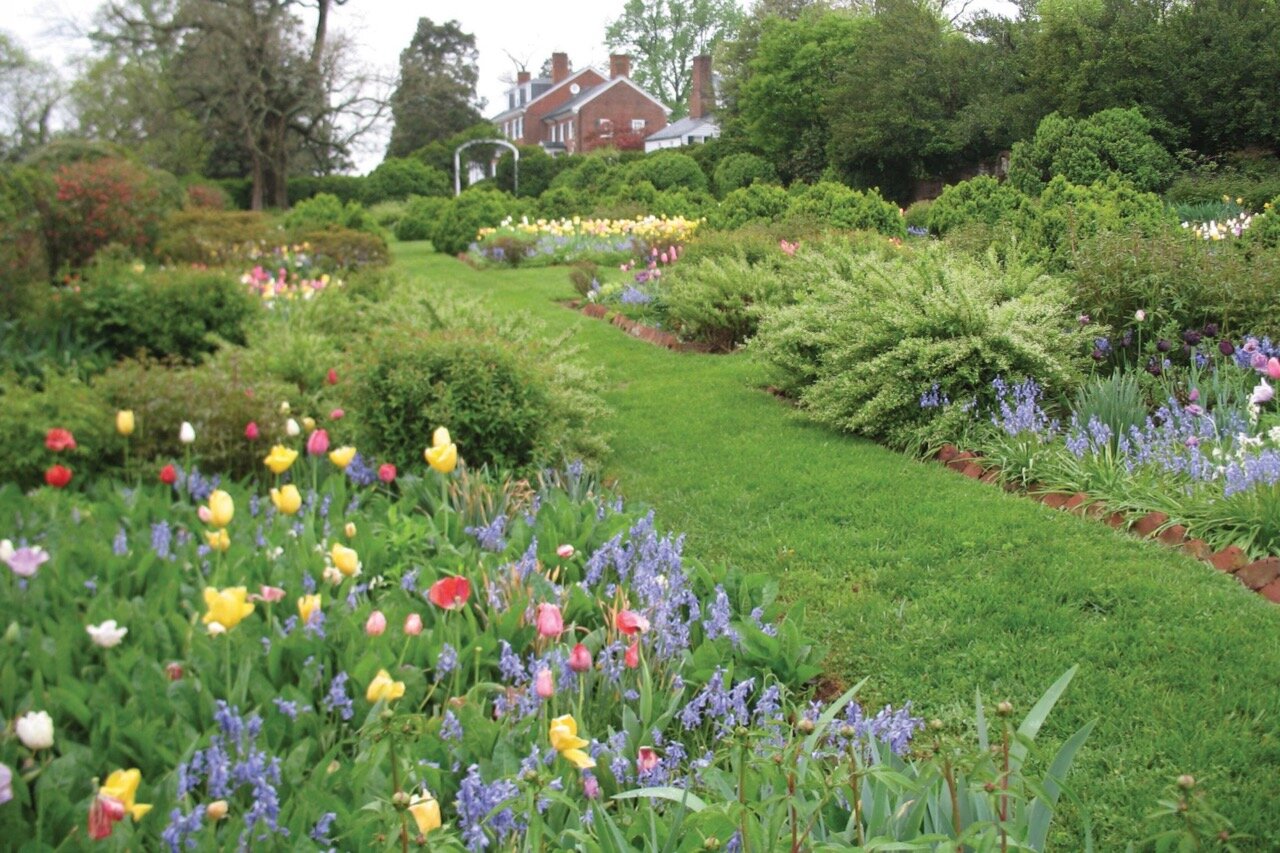
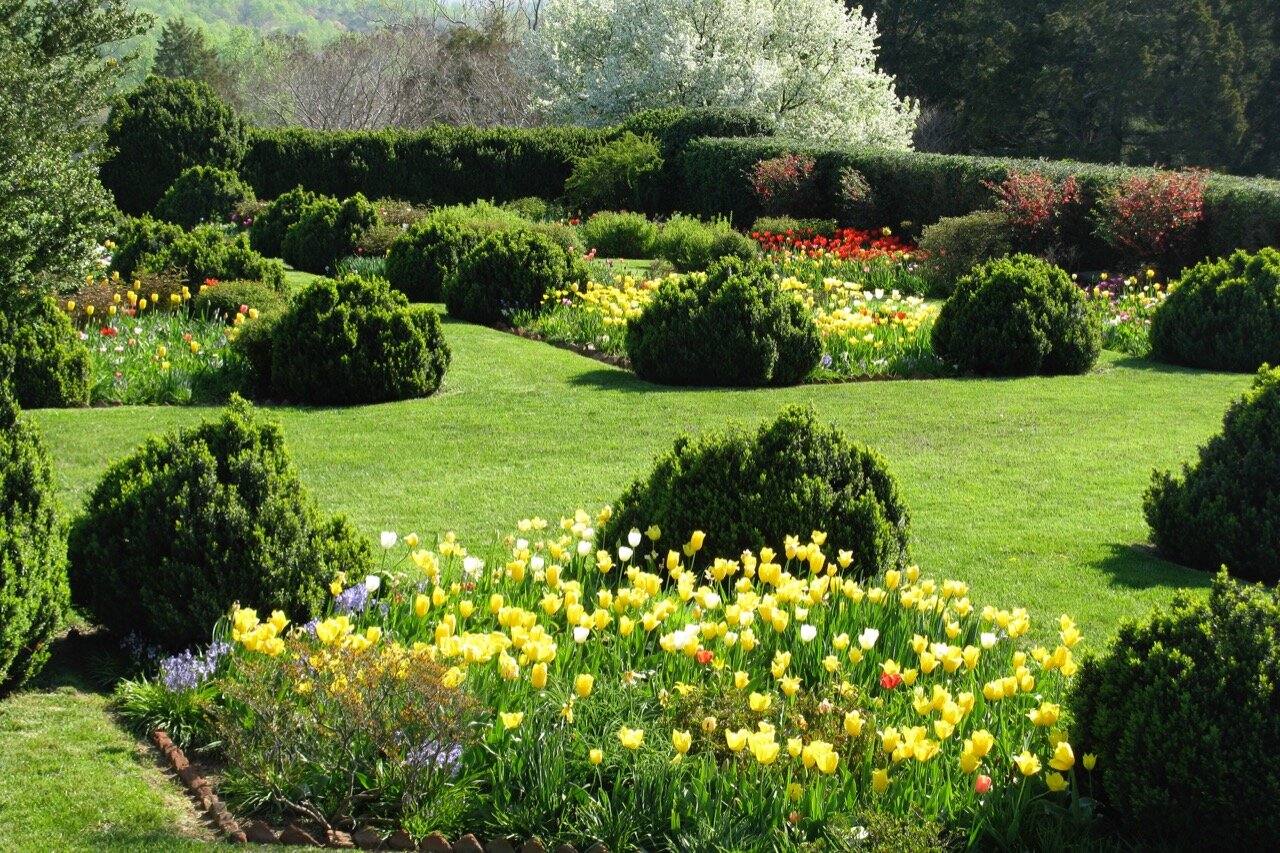
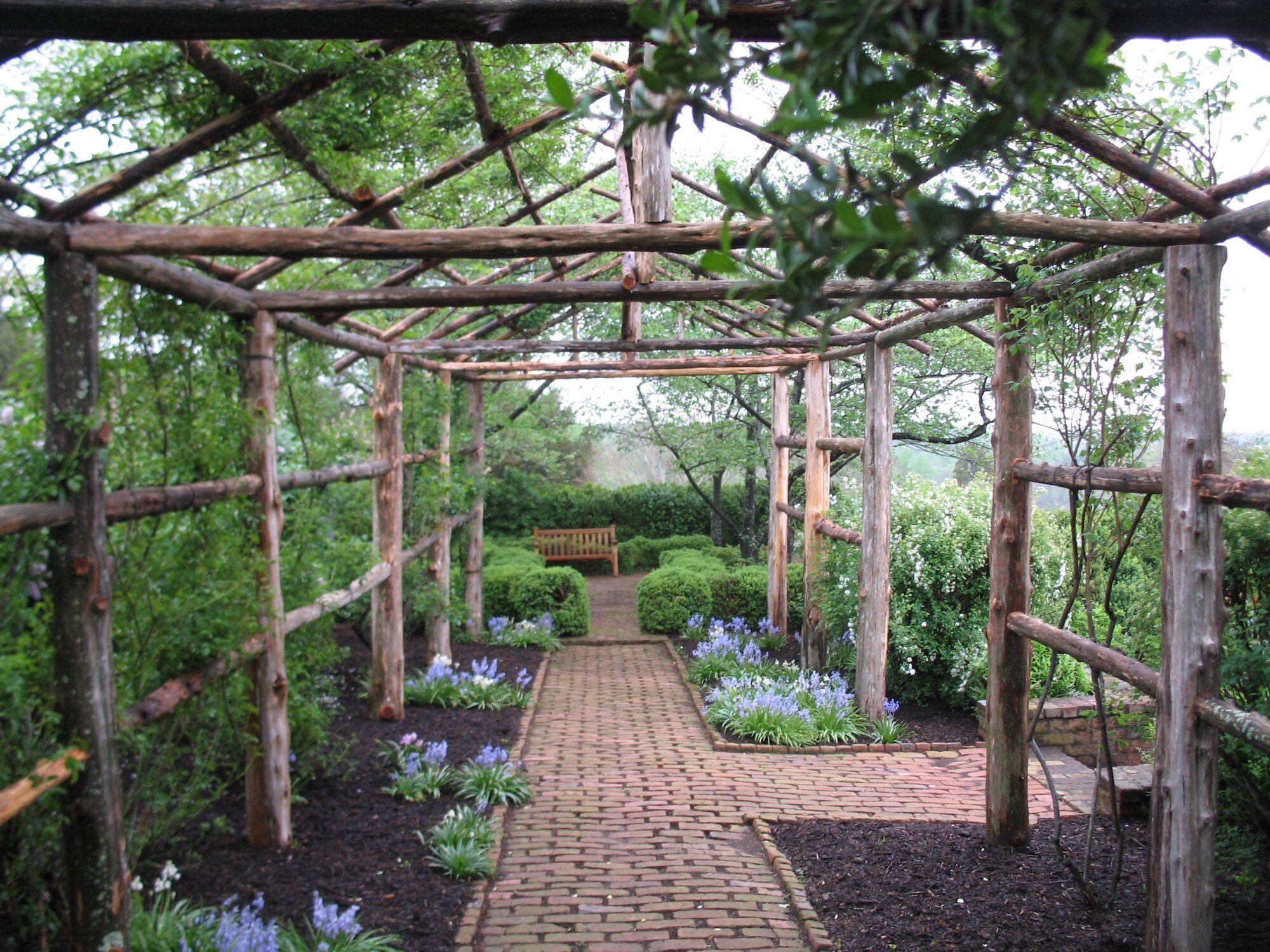
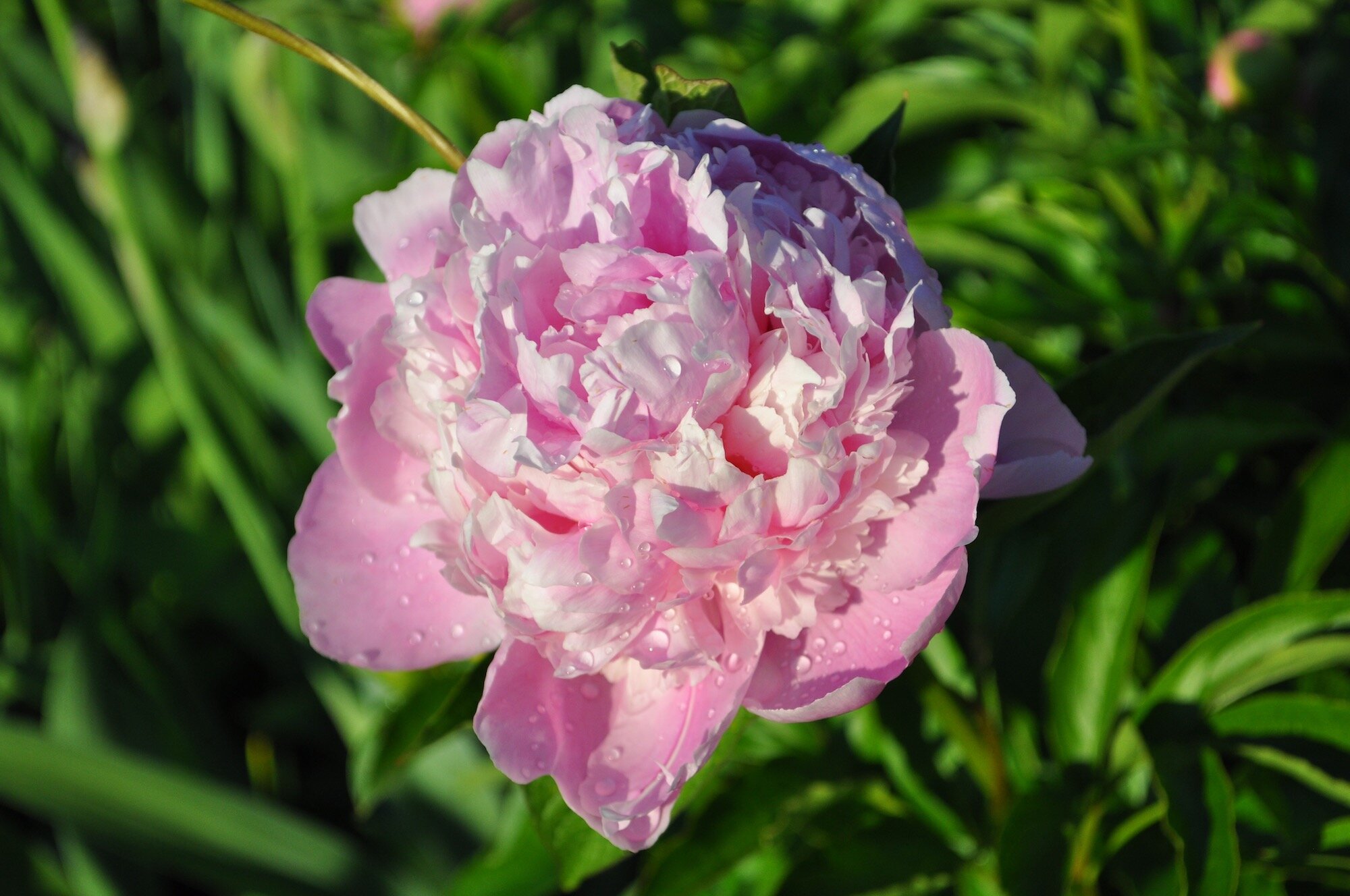
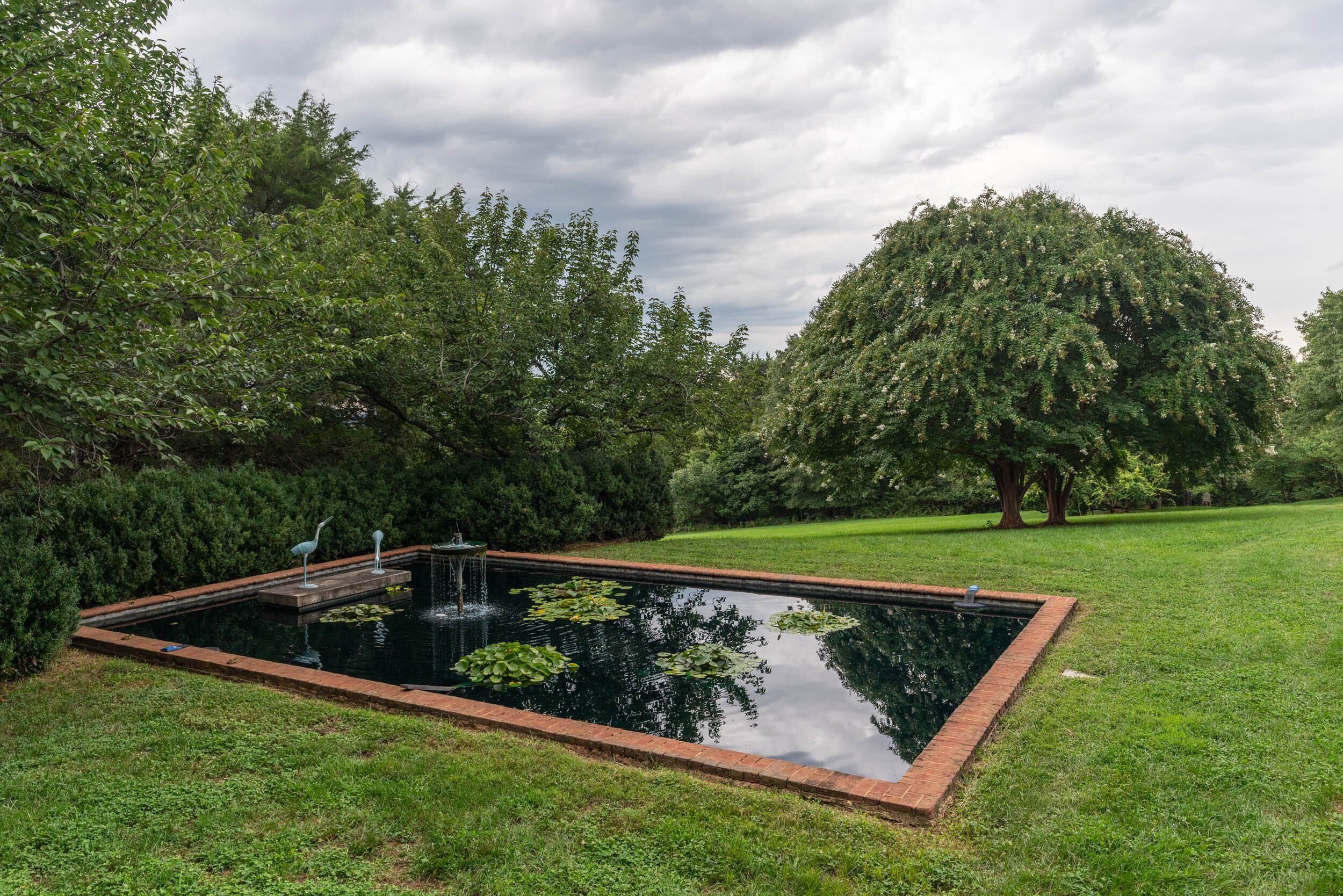
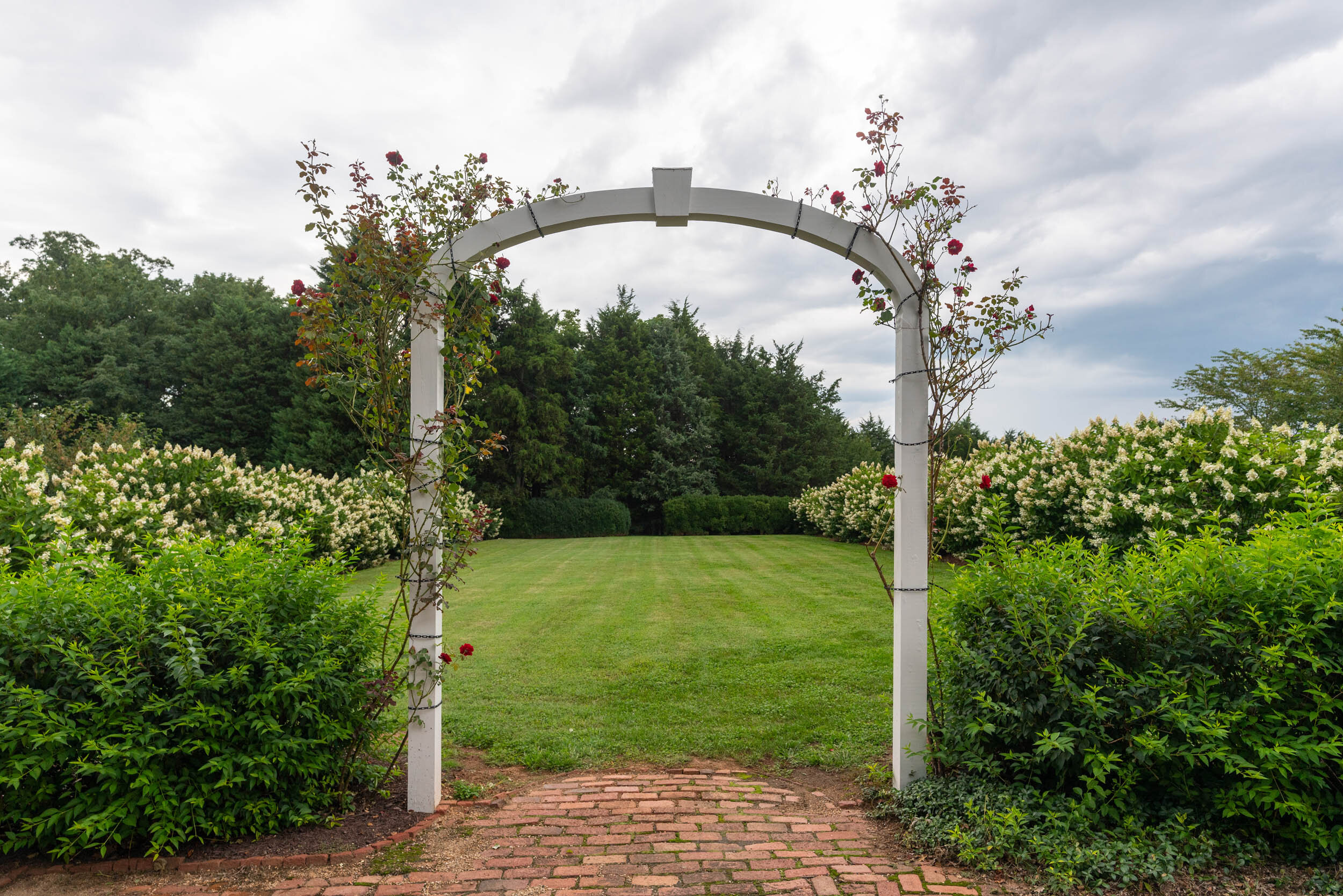
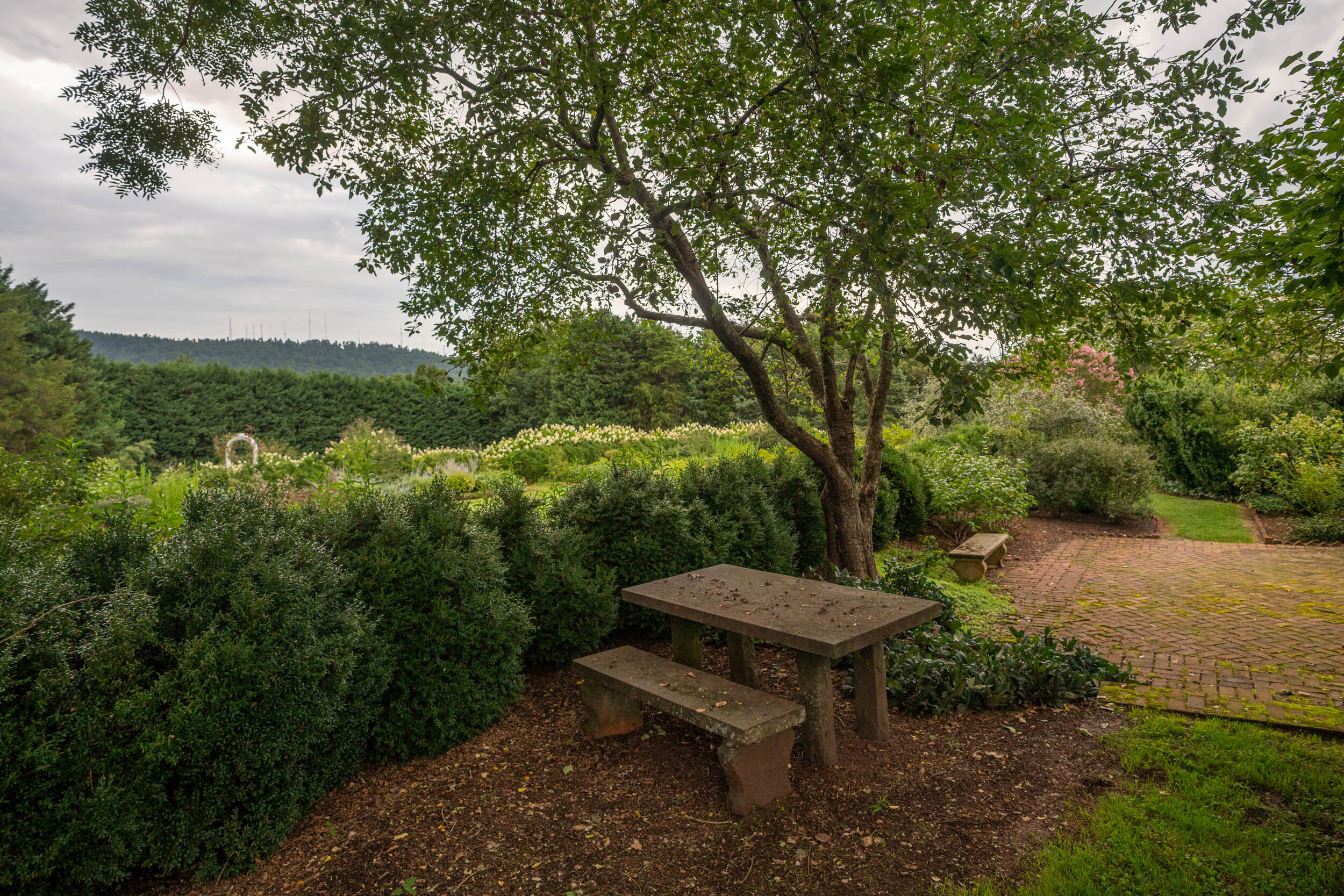

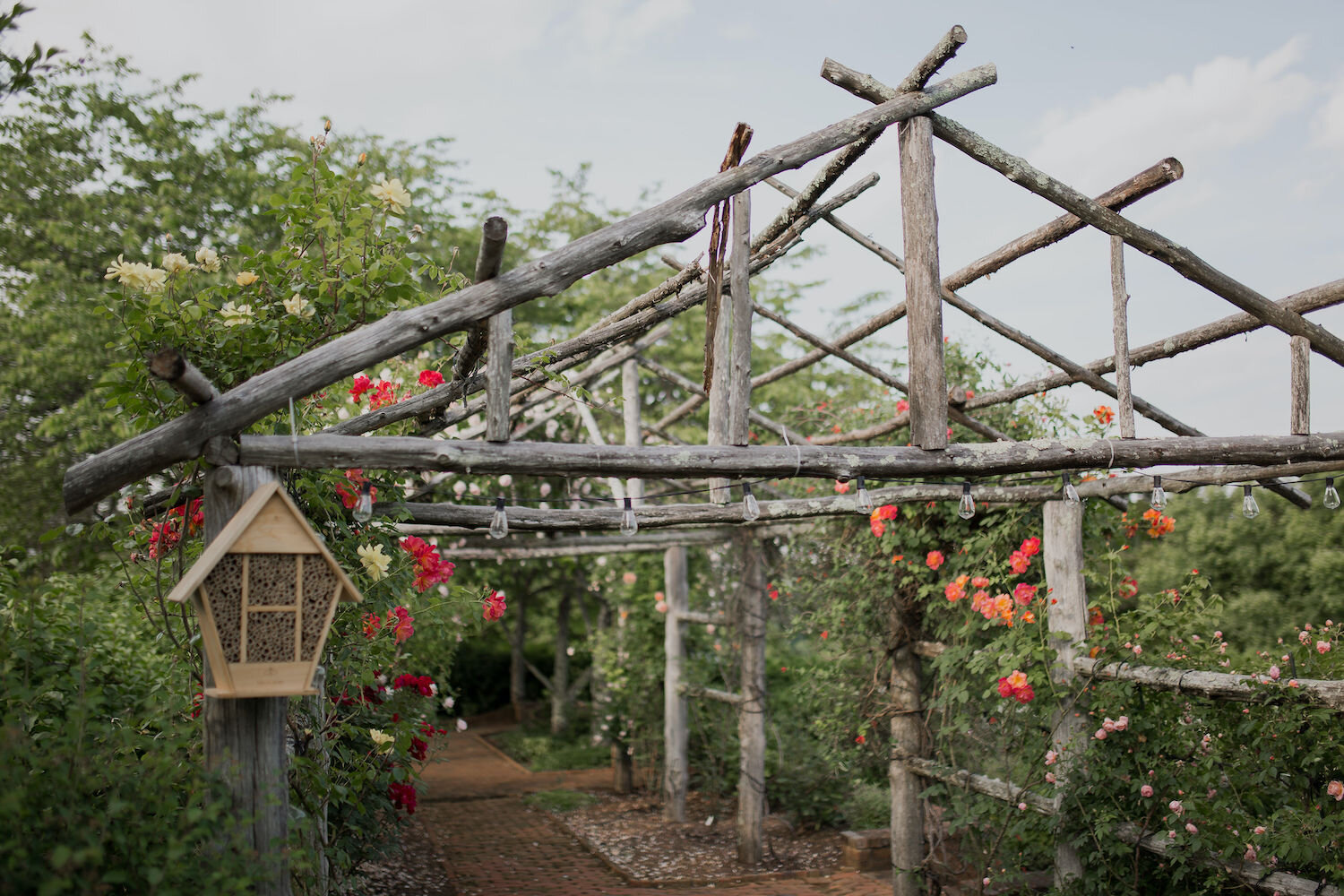
Restoration & Development of the Formal Gardens
Morven owners Mr. and Mrs. Charles A. Stone hired landscape architect Annette Hoyt Flanders to restore the gardens in 1930. In addition to designing landscape features such as entrance gates, brick detailing, and slate seats, Flanders created extensive planting plans for the parallel Formal Gardens and Cutting Garden. As dictated by Flanders’ design, both gardens combined numerous shrubs, perennials, and annuals, and shared a similar color palette of purples, blues, pinks, white, and some hints of yellow.
In the Formal Garden, Flanders filled the previously established symmetrical beds to the brim with clumps of perennials such as Delphiniums, Peonies, and Iris, and accented the plantings with small Boxwoods. Lilacs, Rhododendrons, and Azaleas embellished the hawthorn hedges along the outer edge of the garden. For the Cutting Garden, Flanders planned rows of annuals and perennials like Phlox, Zinnias, Asters, Dahlias, and Cornflowers, combined with many of the same plants found in the Formal Gardens. Behind these rows stood taller shrubs, notably the repetition of one Forsythia framed by two Buddleias. Between the two long borders of the Cutting Garden, Flanders designated eight narrow beds of vegetables and four of strawberries. A collection of roses, including rosa ‘Mrs. Charles Bell’ and rosa polyantha ‘Ellen Poulsen,’ stood as the centerpiece of the Cutting Garden.
Annette Hoyt Flanders (1887-1946)
Flanders tailored each design to its distinctive setting, drawing on various styles over the years, ranging from Midwestern naturalism to Beaux Arts traditionalism to early Modernism. She believed that landscape architects, must assume full control of all aspects of their practice, including design and construction. As a female landscape architect practicing in the 1930s and 1940s, Annette Hoyt Flanders excelled in a field then dominated by men. Educated at Smith College, she went on to study landscape architecture at the University of Illinois and took courses in engineering at Marquette University. By 1922, Flanders had opened her own office in New York City. Flanders completed at least 75 projects during her career spanning 27 years. The majority of her clients including Mr. and Mrs. Vincent Astor and Mr. and Mrs. Charles E. McCann, resided on the East Coast or in the Midwest.
In addition to leading a busy design practice, Flanders devoted her time to educating the public on the merits of beautiful and skillful garden design. Flanders wrote articles for Good Housekeeping, House and Garden, and House Beautiful. She also taught courses in landscape design and gave lectures such as “Ten Commandments of Garden Maintenance.” Flanders recognized and promoted the importance of the role of plants and horticultural experience in good design. Annette Hoyt Flanders received the Medal of Honor from the Architectural League of New York in 1932 and was a fellow of the American Society of Landscape Architects.
Formal Garden Brochure:
Our Formal Garden brochure explores the history of the gardens, with descriptions of notable trees and plants. Click the image to see more.
Contact us if you would like to host an event for your UVA group or local non-profit.
Please note that due to the details of Morven’s gift agreement and our staffing footprint, we are unable to accommodate public access to the property. There are annual events that open the gardens, most notably the Historic Garden Week hosted by the Garden Club of Virginia.






